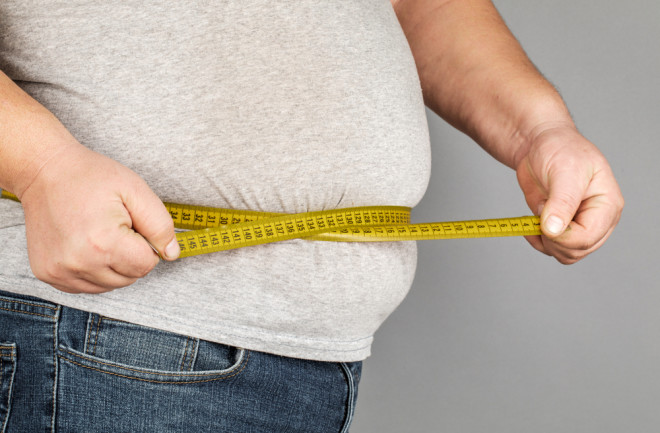A few months after the terrorist attacks on 9/11, Tommy G. Thompson, then secretary of health and human services, urged all Americans to lose 10 pounds as “a patriotic gesture.”
As Americans coped with the attacks, a cultural anxiety developed about rising obesity rates and what it meant for military readiness. On TV, a flood of new shows like “The Biggest Loser” pitted contestants against each other as they fought to shed pounds. Social scientists began noticing anti-fat attitudes that went beyond these programs into other aspects of entertainment media. America, it seemed, was ready to battle the bulge.
Obesity rates, however, haven’t declined in the past two decades. Americans continue to gain weight each year and a new study finds that younger adults are one of the most susceptible groups.
Expanding Waistlines
In the past two decades, obesity rates in the U.S. have increased from 30.5 percent of adults in 1999 to 41.9 percent of adults in 2020. Severe obesity has almost doubled from 4.7 to 9.2 percent, according to the Centers for Disease Control and Prevention (CDC).
For young people, the COVID-19 pandemic only made the situation worse. One study by the CDC looked at body mass index rates (BMI) of more than 430,000 kids and teens between 2018 and 2020. During the first seven months after the pandemic started, the increases in monthly BMI rates nearly doubled.
Kids and teens who were overweight or obese prior to the pandemic had higher weight increases and averaged a gain between one to 1.2 pounds per month. Weight gain at such a rate would result in a six-month total between 6.1 and 7.3 pounds. In contrast, kids at a healthy weight put on an average of 2.7 pounds during the same time period.
The epidemiologists involved in the study had several explanations for the pandemic weight gain. Kids and teens were suddenly cut off from school, and they had to deal with the stresses of trying to learn at home. Gym class, sports practices and games were all canceled. At the same time, they had less exercise, they also had increased screen time. And like their parents, many kids and teens also turned to unhealthy comfort foods during the lockdowns.
Pandemic stresses helped explain why many kids (and many adults) gained weight in 2020. A nationwide study published in 2022 found that almost half of U.S. adults reported gaining weight after the pandemic started.
But a longitudinal study has found that American adults have been steadily gaining weight in the past decade — well before the terms “lockdown” or “social distancing” had entered the lexicon.
A Slow Build
A study published in May 2022 in the Journal of Obesity analyzed data for more than 13,000 adults from the years 2011-2018.
The authors intended a decade-long analysis that ran from 2011 to 2020, but data from the last two years were unavailable because of what they referred to as “issues due to COVID.”
After analyzing the information and seeing how different demographics fared, the study found that people gained weight gradually. From one year to the next, most people didn’t have a sudden spike in weight. Most people, however, did gain weight each year.
By the end of the study, 51 percent of people in the sample gained at least five percent of their body weight. Of those who put on pounds, more than 35 percent gained at least 10 percent of their body weight. A person who weighed in at 200 pounds in 2011, for example, went up to 220 by 2018.
Sixteen percent of the sample gained 20 percent of their body weight or more, meaning a person who stepped on the scale in 2011 at 200 pounds found themselves at 240 by 2018.
As a group, the adults in the analysis had a BMI increase from a mean of 28.2 to 29.7. But when the study’s authors looked at different demographics, they found the weight gain was not even. Some groups were more susceptible to weight gain than others.
Not Slowing Down
One of the biggest takeaways of the study was that women gained double the amount of weight as men. The average pound increase was 12 pounds for women and 6 pounds for men.
The authors were also surprised by the age when people in the sample started to gain weight. Instead of staying slim as younger adults and then putting on pounds in middle age, younger people had the highest weight gain.
On average, people gained 17 pounds between their 20s and 30s; 14.3 pounds between their 30s and 40s; and 9.5 pounds between their 40s and 50s. People in their 70s had the smallest weight gain, averaging around 2 pounds.
The authors also noted sharp distinctions among different races, affecting people of color disproportionately. Among the groupings in the study, non-Hispanic Black adults gained the most weight, and Black women saw the highest gain of 19.4 pounds.
The least affected group in the study, non-Hispanic Asian men, gained an average of 2.9 pounds.
The study’s authors stressed that obesity is a serious problem in the adult population, particularly among younger adults, women and non-Hispanic Black people. They also concluded that knowing which groups were more susceptible could improve intervention programs.
The groups identified in the study, however, make up most of the U.S. population, an indicator that the obesity epidemic is not slowing down.

